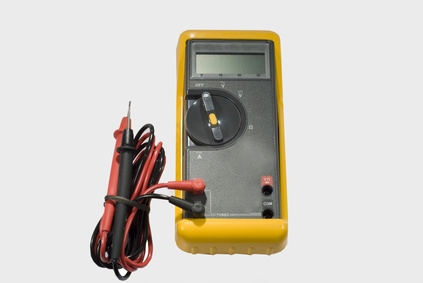
Series circuits allow electrical current in the circuit to flow through all of the components in the circuit. In the case of several electrical resistors wired in a series, the total resistance in a series circuit equals the sum of the resistance values of each individual resistor in the circuit. Similarly, if two voltage sources (such as batteries) are connected in a series, the total voltage differential in the circuit will equal the sum of both voltage differentials.
Cut three lengths of wire. Strip 1/2 inch of insulation from each wire end.
Attach one end of the first wire to the positive terminal on the first battery. Attach one end of the second wire to the negative terminal on the first battery. Attach the free end of the second wire to the positive terminal on the second battery.
Attach one end of the third wire to the negative terminal on the second battery. Turn on the voltmeter and set the scale to "Volts DC." Place the red (positive) probe on the free end of the first wire and place the black (negative) probe on the free end of the third wire. Read the voltmeter display; the voltage differential will be approximately 24 volts DC.